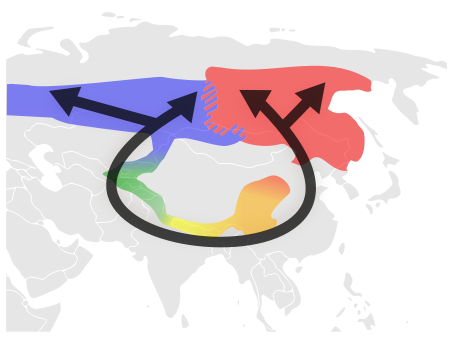The Origin of Species?
Despite the title of Darwin’s famous book, we cannot be sure to what extent natural selection acting on gradual accumulation of small mutations has accounted for the development of new species. Many of the examples that are often quoted as demonstrating that this is the main source of new species show that new species have arisen in new niches, e.g. by geographic isolation as in the case of the Galapagos island tortoises and finches. But this evidence, by itself, does not establish what the mechanism may have been. Other interpretations would also be possible.
Darwin’s idea of natural selection was in part based on observing the effects of artificial selection, producing many different varieties of dogs, cats, fish etc. But it is important to note that thousands of years of this kind of selection has produced new varieties, not fully-fledged new species as defined by inability to interbreed. At best, this demonstrates selection’s ability to produce incipient development of new species.
Perhaps the best example of species development is the variety of greenish warblers, forming what is called a ring species around the Himalayas. See http://www.zoology.ubc.ca/~irwin/greenishwarblers.html

Presumed evolution of Greenish Warblers around the Himalayas. The colours indicate the subspecies: Yellow: P. t. trochiloides; Orange: P. t. obscuratus; Red: P. t. plumbeitarsus; Green: P. t. “ludlowi”; Blue: P. t. viridanus.
From Wikimedia Commons. Wikipedia entry on Greenish Warblers
North of the Himalayas there are two varieties (subspecies?) that co-exist but do not interbreed. But they are each connected to varieties with which they do interbreed stretching around the Himalayas to join the ring together in the south. Ticehurst proposed in 1938 that the greenish warblers started in the south, then slowly evolved as they spread around the Himalayas to the west and east, to eventually meet in the north when they had become different species. Genetic data are consistent with his hypothesis. This is perhaps the best example we have of this process, which itself is rare. Note however that this evidence supports Ticehurst’s hypothesis about the historical development, since the two northern forms are the most distinct genetically, but it does not in itself prove the precise mechanism. It does not, for example, exclude a Waddington-type influence of the environment on the selection of combinations of genes, or any other process by which a Lamarckian process becomes assimilated into the genome. Nor does it exclude natural genetic engineering. This is a difficulty with any study of existing genetic variations to infer the process by which those variations originally arose. The role of natural genetic engineering could be determined when we have genome sequences from most or all of the varieties.
By contrast, hybridisation in plants readily generates new species, and the process of symbiogenesis must also have done so. Natural genetic engineering could also do so if it involves DNA shuffling that removes reproductive compatibility.
The important message here is not that the generation of new species by natural selection working on random mutations is impossible, but rather that the examples often quoted to prove that it happened are not so clear cut when they are examined closely. We have to distinguish evidence about the historical development of new species from evidence about the precise mechanisms by which this happened.
